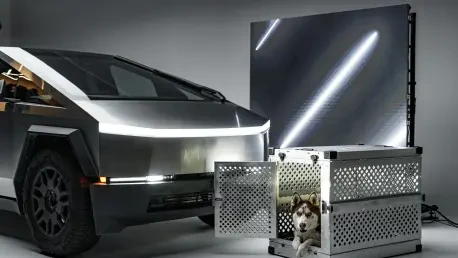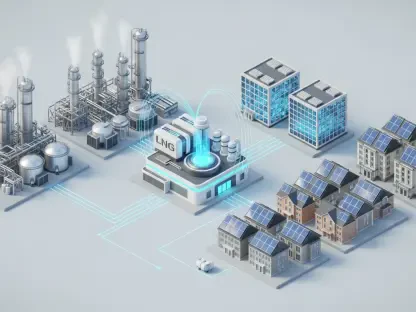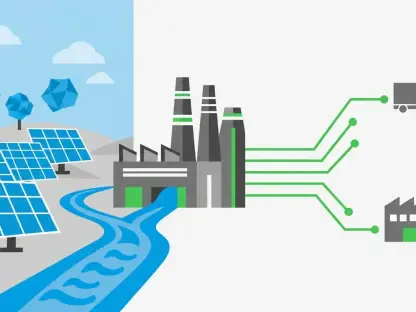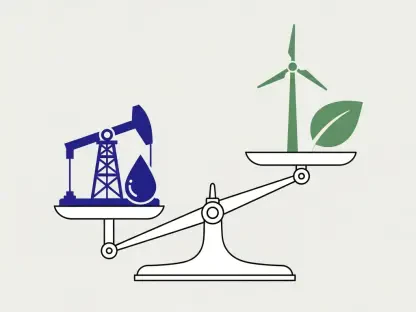In a world increasingly driven by innovation, Tesla, Inc. (NASDATSLA) continues to push boundaries with its latest financial and strategic revelations from the Q3 earnings call and update letter released on October 22. As a leader in electric vehicles (EVs) and clean energy, Tesla’s updates provide a captivating window into not just its business performance, but also its vision for transforming industries through cutting-edge technology. With revenue growth, record cash reserves, and groundbreaking projects on the horizon, the company stands at a pivotal moment. From the brink of unsupervised autonomous driving to ambitious plans for humanoid robots, Tesla’s roadmap is as audacious as it is inspiring. This exploration delves into the financial metrics, technological advancements, and overarching goals that define Tesla’s current trajectory, offering a comprehensive look at how the company aims to shape the future of mobility, energy, and beyond.
Financial Insights: Balancing Growth and Investment
Tesla’s financial performance in Q3 offers a narrative of both strength and strategic trade-offs. The company achieved robust revenue of $28.095 billion, reflecting a 12% year-over-year increase, which signals sustained consumer demand for its EVs and energy products despite a competitive market landscape. However, this growth comes with a notable challenge as operating income fell by 40% to $1.6 billion, resulting in a tightened operating margin of 5.8%. This decline likely stems from significant investments in research and development, a necessary step to fuel the innovation that keeps Tesla ahead of the curve. While short-term profitability faces pressure, with GAAP net income at $1.37 billion and earnings per share at $0.39 (GAAP) and $0.50 (non-GAAP), the numbers still reflect a company with considerable financial muscle to navigate these challenges.
Beyond the income statement, Tesla’s liquidity tells a story of resilience and readiness. A record-breaking free cash flow of $4 billion in the quarter, coupled with cash reserves and investments totaling $41.6 billion, underscores a formidable balance sheet. This financial stability provides Tesla with the resources to fund ambitious projects, from autonomous driving software to next-generation energy storage solutions. While the dip in operating income raises questions about cost management, the substantial cash position suggests that Tesla is well-equipped to prioritize long-term growth over immediate profit margins. This balance between current challenges and future potential paints a picture of a company strategically positioning itself for transformative leaps in the coming years.
Driving the Future: Autonomy and AI Breakthroughs
At the heart of Tesla’s strategic focus lies its relentless pursuit of autonomy and artificial intelligence (AI), a theme that dominated discussions during the earnings call. CEO Elon Musk described the impending rollout of unsupervised Full Self-Driving (FSD) as a transformative “shockwave,” poised to redefine transportation with a simple software update across millions of Tesla vehicles. The development of FSD V14, including a tailored version for older Hardware 3 vehicles, demonstrates a commitment to ensuring that all customers can experience this technological leap. This push toward unsupervised autonomy positions Tesla as a frontrunner in a space where innovation could disrupt not just the automotive sector, but entire urban ecosystems reliant on personal and shared mobility.
Complementing the software advancements, Tesla’s hardware innovations in AI are equally compelling. The AI5 chip, developed in partnership with industry giants Samsung and TSMC, promises a staggering 40x performance improvement over its predecessor, AI4. Musk’s enthusiasm for this cutting-edge design highlights how integral AI is to Tesla’s vision, extending far beyond vehicles to broader applications of real-world intelligence. This dual focus on software and hardware integration ensures that Tesla maintains a competitive edge in autonomous technology, setting a high bar for rivals. As these developments unfold, they signal a future where Tesla’s influence could reshape how technology integrates into daily life, driving efficiency and accessibility on a global scale.
Energizing Tomorrow: Growth in Energy Storage
Tesla Energy has emerged as a powerhouse segment, with Q3 marking record deployments of products like the Powerwall for residential use and the Megapack for industrial applications. Musk emphasized the transformative potential of these battery solutions to enhance global energy grids, addressing both individual and large-scale needs amid rising demand. The upcoming Megapack 4 represents the next step in this evolution, promising enhanced capabilities to store and distribute energy efficiently. This focus aligns seamlessly with Tesla’s mission to accelerate the transition to sustainable energy, positioning the company as a key player in reshaping how power is managed worldwide.
In parallel, renewed consumer interest in Tesla Solar Roof products points to a growing appetite for integrated clean energy solutions. This resurgence, combined with strong demand for storage systems, highlights a diversified growth driver that complements Tesla’s automotive dominance. By tackling energy challenges at both the micro and macro levels, Tesla is not merely responding to market needs but actively shaping the infrastructure of the future. The success of Tesla Energy in this quarter underscores a critical pillar of the company’s strategy, one that could rival its EV business in significance over time as sustainability becomes an even greater global priority.
Visionary Horizons: Robots, Cybercabs, and Societal Impact
Tesla’s product pipeline extends far beyond traditional automotive boundaries, venturing into realms that seem straight out of science fiction. The Optimus robot, a humanoid design with a potential version 3 unveiling in early 2026, is pitched as a revolutionary product with applications ranging from household tasks to complex operations like surgery. While Musk acknowledges the immense technical difficulties, particularly in crafting dexterous robotic hands, the scalability of Optimus could make it a ubiquitous presence in homes and industries. Similarly, the Cybercab—a driverless vehicle—and advancements in Tesla Semi autonomy showcase engineering feats that aim to redefine transportation norms through cutting-edge design and technology.
Equally striking is Tesla’s redefined mission of “sustainable abundance,” a vision that transcends energy solutions to address broader societal challenges like poverty and access to quality services. Musk envisions technologies like Optimus contributing to a world where systemic issues are alleviated through innovation, positioning Tesla as a catalyst for global change. This ambitious reframing elevates the company’s role from a manufacturer to a problem-solver on a grand scale. While the path to realizing such goals is fraught with complexity, the boldness of this mission reflects Tesla’s history of setting audacious targets, challenging conventional thinking, and inspiring progress across multiple domains.
Scaling Ambitions: Operational and Market Strategies
Operationally, Tesla is gearing up to meet escalating demand, particularly as clarity emerges on unsupervised FSD capabilities. Musk noted that while current production capacity sits below 3 million vehicles annually, the goal is to reach this benchmark within the next 24 months, contingent on supplier readiness. This aggressive expansion underscores confidence in market appetite and technological preparedness. Additionally, the rollout of an expanded Model Y lineup, including the Model Y L, and efforts to secure global approvals for FSD testing signal a push for wider market penetration, ensuring Tesla’s innovations reach diverse regions and demographics.
Financially, diversification remains a priority, as highlighted by CFO Vaibhav Taneja’s comments on regulatory credits. Although there was a sequential decline, new and fulfilled contracts continue to bolster revenue streams. Strong interest in energy storage solutions and a resurgence in Tesla Solar Roof adoption further complement these efforts, illustrating a multifaceted approach to growth. Despite acknowledged challenges, such as the complexities of pioneering products like Optimus, Tesla’s operational strategy reflects a calculated balance of scaling production with innovation, aiming to solidify its foothold across evolving markets.
Reflecting on a Bold Path Forward
Looking back at Tesla’s Q3 earnings call and update letter released on October 22, the company presented a compelling blend of financial fortitude and visionary ambition. Revenue growth and unprecedented cash reserves demonstrated resilience, even as profitability faced headwinds from substantial investments. Breakthroughs in autonomy and AI, alongside record energy storage deployments, marked significant strides toward a sustainable future. Projects like Optimus and Cybercab, paired with a mission of sustainable abundance, revealed Tesla’s intent to tackle global challenges through technology. As the dust settled on these discussions, the path ahead became clear: stakeholders and observers should watch how Tesla navigates execution challenges, particularly in scaling production and overcoming technical hurdles. Continued focus on regulatory approvals for FSD and strategic partnerships will be crucial. Tesla’s journey promises to be one of innovation and impact, with each step offering lessons and opportunities for a world eager to embrace transformative change.









